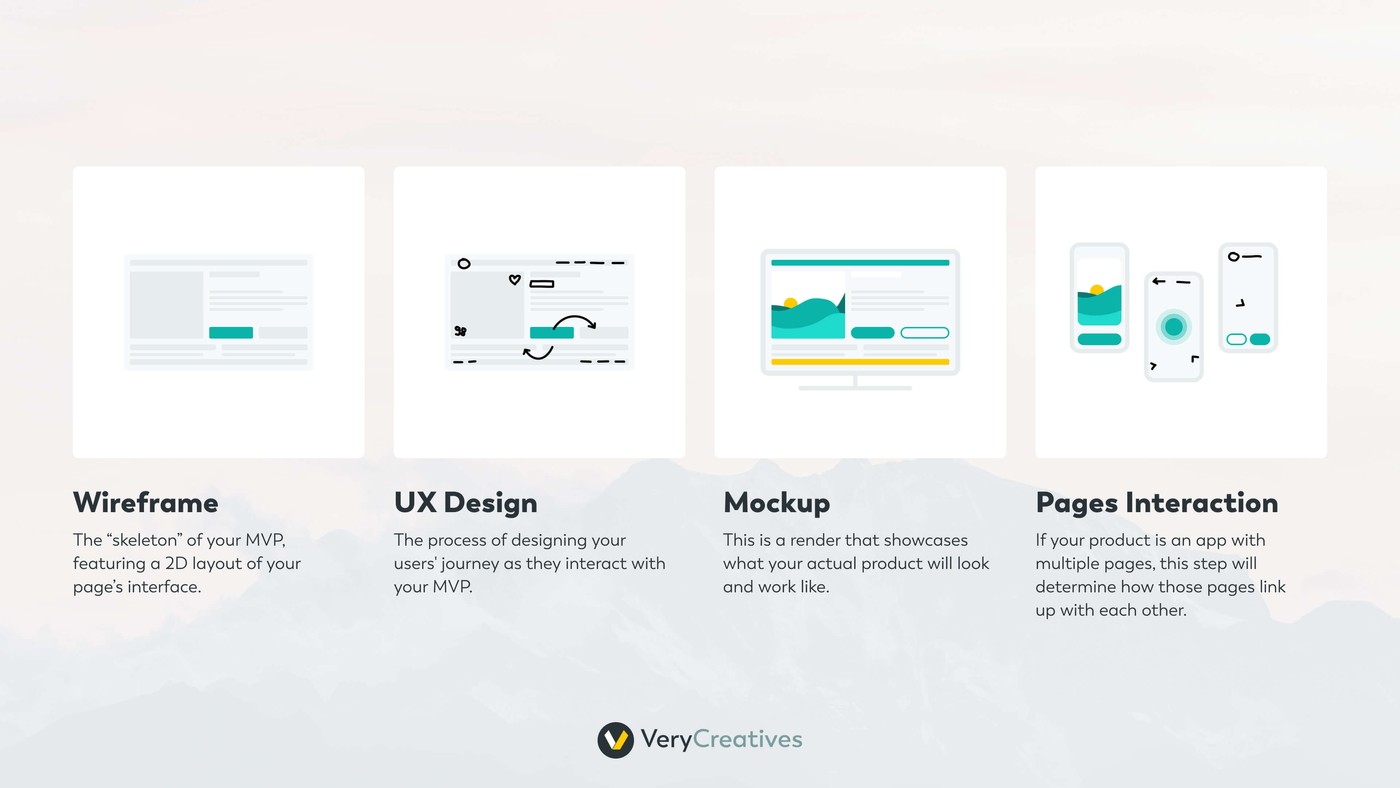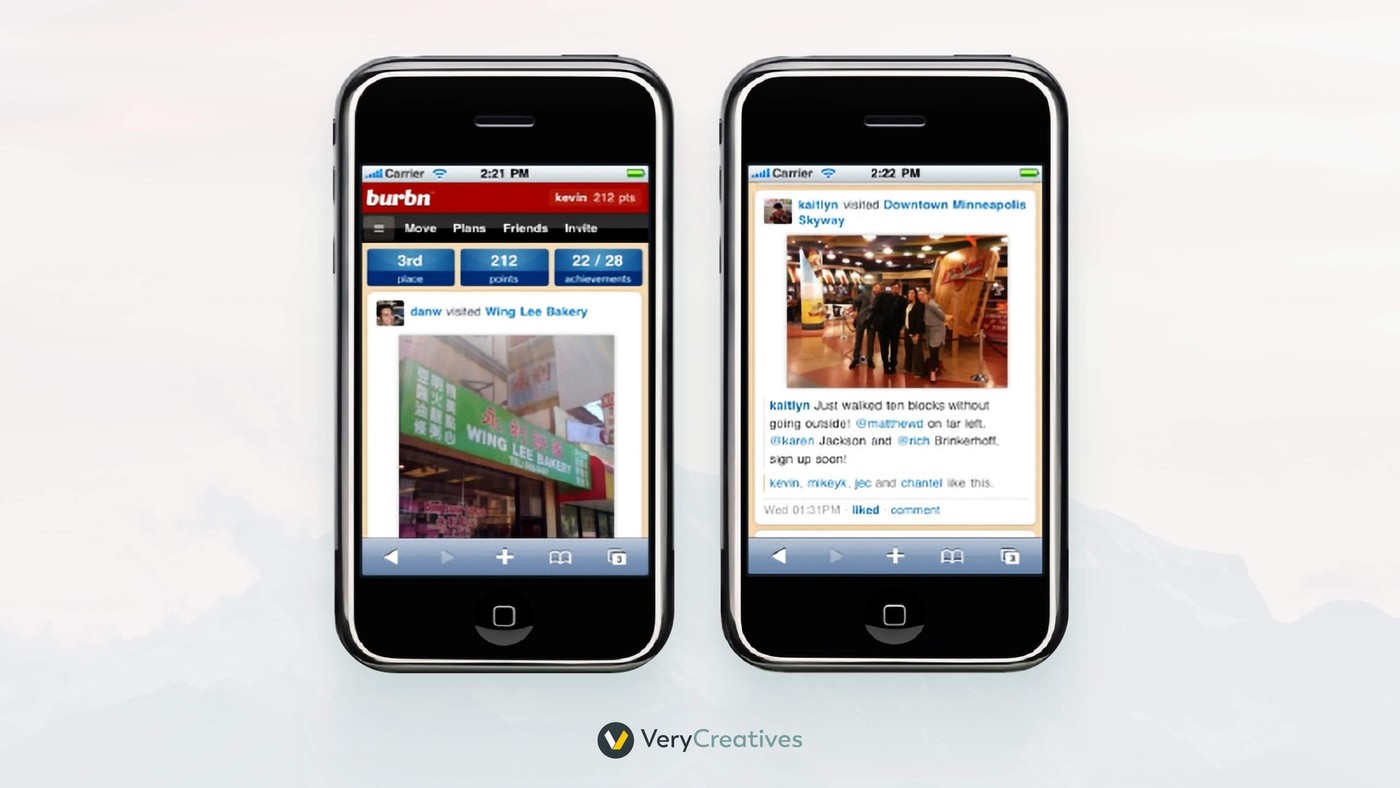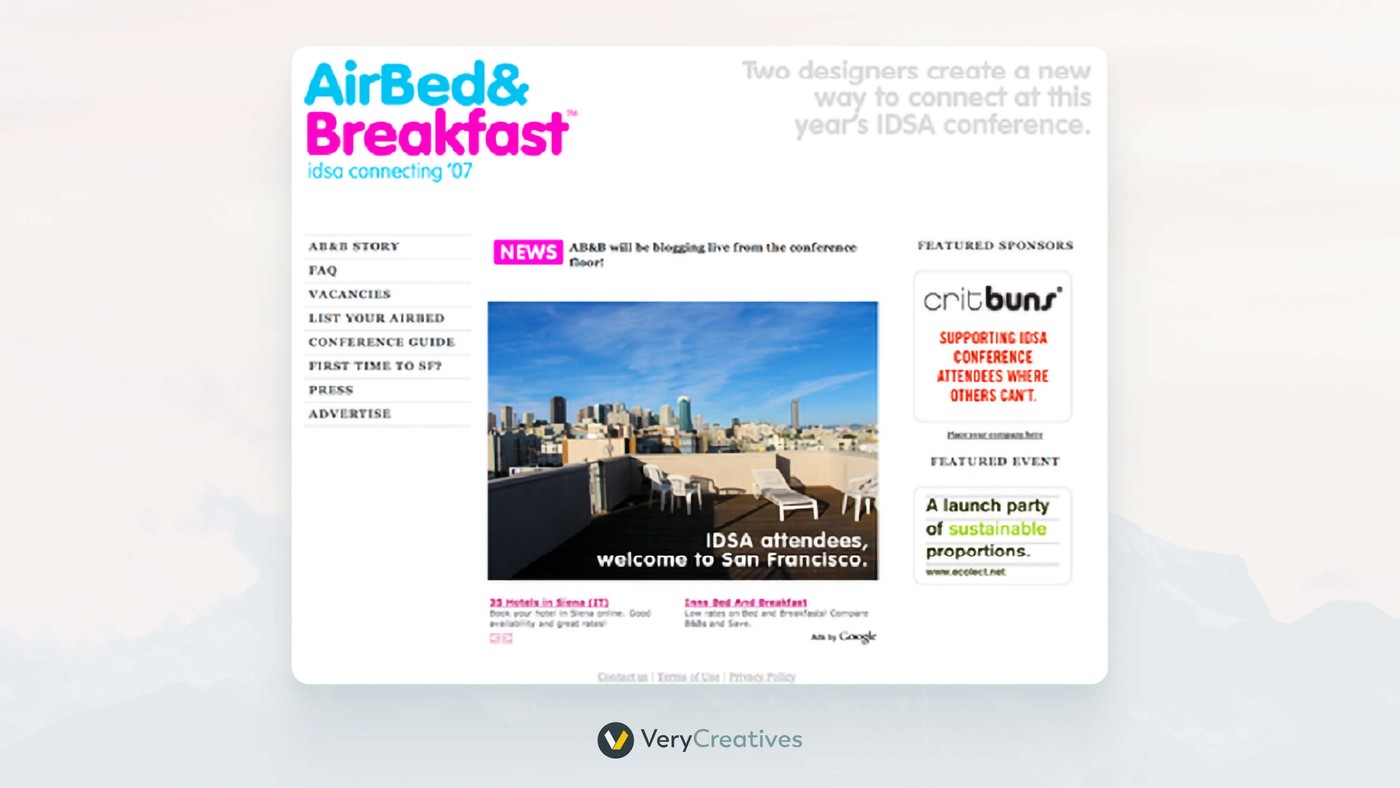Launching a new product for any startup or business is scary. Your resources could go to waste if it doesn’t resonate with your audience.
However, you don’t need to take that risk. You can build a Minimum Viable Product (MVP) to test the success of your product in the real world.
But how much does an MVP cost?
In this article, we’ll provide an estimated cost breakdown for each development stage. We’ll also incorporate real-world examples to help you learn from their success.
Defining an MVP (Minimum Viable Product)
A minimum viable product (MVP) is a basic version of your product designed to test your idea with your target audience. The idea is to gain the most amount of validated learning about your customers with the least possible effort.
Here are a few key benefits of investing in MVP development:
- Focus on Core Features: The MVP approach helps you focus on core functionality instead of adding features that don’t solve your user’s problem directly.
- Quicker Release: By focusing on core features, you spend less time developing and receive feedback quicker, reducing your time to market.
- Resource Management: Your startup has limited resources. MVPs can help you identify which areas of product development solve the target users’ primary problem so you can better manage your sources.
- Building Customer Relationships: MVPs help you build a customer base and a community around the product.
- Attracting Investors: A successful MVP can prove that your startup has a viable business idea and a market for its product. Thus, you can attract investors.
Building an MVP gives you a massive advantage at early stages of your product. But is building it worth your buck?
Cost Breakdown by Development Stages
We have determined four key stages involved in MVP development. Understanding the costs associated with each stage will help you come up with accurate MVP cost estimates.
Planning and Research
Building an MVP requires a strong foundation and careful planning. In fact, not focusing on this step is one of the biggest MVP development mistakes one can make.
In this phase, you need to determine who your competitors are, what the market trends look like, and who your target audience is. You can choose from several different market research tools.
You can use a basic plan for free to save costs. However, depending on the platform, paid plans range from $30 to $200 and offer many services to help you out.
For example, Market Explorer is a useful research tool to help you find competitors and assess market trends. A monthly subscription costs $200.
You can also find apps to help you conduct surveys and interviews. You should also factor in travel costs if you plan to interview in person.
Design and Prototype
For this stage, you must consider user interface (UI), user experience (UX), and choosing between hybrid and native applications. The design cost also depends on the kind of operating system you plan to use.
You can create a hybrid app that uses a single codebase, resulting in a uniform design. Although cost-effective, it will perform more slowly than a native app.
Native apps require more complex coding for a faster, more interactive experience. However, they come with a higher price.
A native app usually costs twice the amount of a hybrid app. If you have a large budget, you can opt for a native app.
The overall cost of an MVP design also depends on the type of team you hire.
In the US, the agency hourly rate for a UX designer ranges from $60 to several hundred dollars. On the other hand, for an in-house team, the hourly rate averages around $58.
A freelancer may cost less, but they come with the risk of lacking responsibility. They could leave the project if they find it suitable, leaving you to bear the brunt of the workload.
Meanwhile, an in-house team may cost more but offer better coordination and consistency. However, this option isn’t ideal if you have a limited budget.
Deciding between hiring a freelancer or an employee comes down to your budget and requirements.
Development
The development stage is when the product is actually built. The MVP cost for this phase depends on factors like the complexity of the product, the technology stack used, and the development methodology you choose.
A basic MVP with simple features can cost you $30,000. Additionally, an MVP with medium complexity can range from $30,000 to $60,000, while a highly complex one can even cost $100,000-$150,000.
As mentioned earlier, you could hire a freelance or an in-house team for the development phase. But this comes with problems, like finding, hiring and retaining capable team members, keeping them happy, taking care of salary increases, vacations and managing each individual. Not to mention building company culture and an HR department.
All in all, outsourcing the development to a specialized product agency can be cost-effective, with the potential cost as low as $30,000. This can be a good option for a startup with a limited budget.
Are you concerned about the speed of your development process? See how adopting the Agile framework for software development can help you.
Testing and QA
Testing and Quality Assurance (QA) are necessary to help remove bugs from your MVP and create a functional and user-friendly product. For this stage, the main costs to look out for are QA testing tools and hiring a QA specialist.
A QA tester is essential throughout the development phase. It can cost you approx. $2,500 per month.
The hourly charges for a freelance QA specialist can vary. For example, according to Clockify.me, a QA engineer can cost $20 per hour.
There are several QA testing tools out there, like Mobot, Bedbug, and Autify. The pricing plans vary from hundreds to thousands of dollars.
For example, Autify can cost around $300 per month, while Mobot has a plan costing $1,500. Find a software that works best for your MVP and product type.
Factors Influencing MVP Cost
We have identified a few key factors that determine the final MVP cost. Understanding these factors will help you manage your resources for MVP development effectively.
Scope of the Project
Your project can be categorized as either small, medium, or large, depending on your planned scope of work:
- Small-scale projects are limited in scope. Since they lack complexity, their development usually takes no more than three months. They typically involve minor tweaks to existing solutions.
- Medium-scale projects consist of well-defined deliverables for building a solution from scratch. The development process usually takes three to six months.
- Large-scale projects involve a great deal of complexity. They are typically standalone solutions that often must be integrated with other systems. As such, development takes up to several years, and the risks involved are high as well.
The size of your project will influence the cost of your MVP, so you need to clarify the scope as soon as possible.
Without a well-defined scope, your project will fall prey to scope creep, which is something we address in our scoping workshop.
Complexity of Features
The complexity of the features you want to include in your product will influence your MVP cost, too. While MVP development is all about focusing on core features, the complexity of each feature will vary from one solution to another.
Suppose your product is a hotel reservation app. Here, you would focus on hotel listings, booking functionality, and user profiles. These features aren’t terribly complex, so the cost of developing them won’t be too high.
But, if your project is an AI-powered app that provides users with customized language lessons, your features won’t be as straightforward. The complex requirements for the MVP of such a product will result in a higher MVP cost.
This example also illustrates why understanding your customer needs is essential. Imagine investing in AI for a to-do list app – that will be one expensive MVP!
Design Requirements
Most MVPs don’t focus heavily on a complete design. However, to attract your target customers, your MVP user interface must be presentable, at least!
With each screen of your MVP acting as a crucial component, your design costs will definitely influence MVP pricing.

The following aspects will influence the cost of your MVP design:
- Wireframe: The “skeleton” of your MVP, featuring a 2D layout of your page’s interface.
- UX Design: The process of designing your users’ journey as they interact with your MVP.
- Mockup: This is a render that showcases what your actual product will look and work like.
- Pages Interaction: If your product is an app with multiple pages, this step will determine how those pages link up with each other.
When estimating your MVP cost, you must clearly identify the number of design elements (pages, buttons, etc.) you wish to include. This will help you calculate the costs associated with processes like wireframing and mockup design.
Technology Stack
The technology stack you choose for the development of your product will also influence your MVP cost. Be it a programming language or a type of server, each technology comes with its level of complexity and required skill set.
For example, building a software MVP will be less expensive if you rely on well-documented and open-source technologies like Python and MySQL. By a similar token, tweaking an existing codebase will cost less than writing your code from scratch.
Infrastructure costs will have a significant impact on MVP pricing. In our example, you must account for servers, bandwidth, and storage costs to have a more accurate estimate of your software MVP cost.
So, if your startup is developing an innovative solution involving complex infrastructure and technology stacks, you can expect high MVP costs.
Real-World Examples of MVP Costs
Looking at real-world examples of successful products like Instagram and Airbnb can help you learn to manage your MVP cost. You’ll understand how budget allocation differs from project to project, especially an MVP in software development.
Here are two good examples to inspire your thought process.

Source: PG Designs
In case you didn’t know, Instagram was initially called “Burbn.” Rather than an app for sharing photos, it started out as a social media game, a cross between Foursquare and Mafia Wars.
The main features of Burbn allowed users to check in to locations, share plans with friends, and earn points by posting photos. Kevin Systrom, the creator of Burbn, coded an HTML5 prototype for the app.
Systrom shared the prototype with his friends to get feedback for the initial testing. Afterwards, he managed to get $500,000 in funding and soon recruited Mike Krieger, the co-founder of Instagram.
Based on the user feedback, the co-founders decided to scrap most of Burbn except for its picture, like, and comment options. They named the new app “Instagram” and worked on it for weeks before launching it in 2010.
Within a few hours, it had thousands of downloads, and the co-founders had to add further capacity to the app.
One of the biggest reasons Instagram succeeded was the co-founders’ decision to focus their resources on photo-sharing. By avoiding over-development of the app, they kept the MVP cost in check.
Airbnb

Source: Fueled
Airbnb’s transformation from a simple idea to a global phenomenon shows what a well-executed MVP can do.
It all started when two of the three co-founders, Brian Chesky and Joe Gebbia, needed help paying their rent. They heard about a big design conference in San Francisco and a lack of hotel accommodations in the area.
So, they decided to create a simple website called airbedandbreakfast.com and post about accommodations in their apartment. They bought a couple of air mattresses and set them up in their living room, offering free breakfast, too.
After the success of their first three guests, the two co-founders met with their old roommate, Nathan Blecharczyk. Together, they developed the idea further, eventually renaming the website Airbnb and acquiring a $600,000 investment from Sequoia Capital.
There are several reasons why Airbnb’s MVP development strategy worked well:
- The co-founders used existing resources from their apartment to test their ideas and gain user feedback.
- They had a clear target audience: conference attendees who needed accommodation in a crowded city.
- After the initial success and clear market need, they started adding more features, like allowing hosts to list their spaces on the website.
Final Thoughts
Developing an MVP is hard work, from the planning to the development and testing phase. You need to consider every stage and carefully allocate resources within your budget.
Regardless of how good your MVP is, it certainly won’t sell itself. This is where you’ll need to look at minimum viable marketing techniques to attract customer attention.
The process may seem daunting, so we’re here to offer our expertise. Book a free call with us today. We can bring your MVP vision to life together.